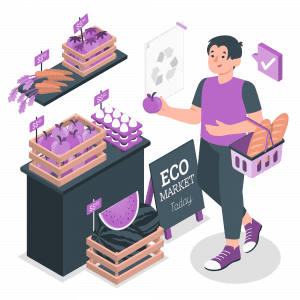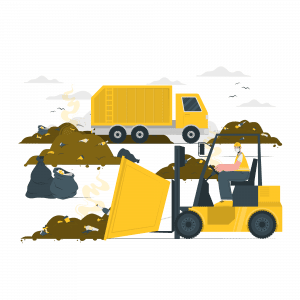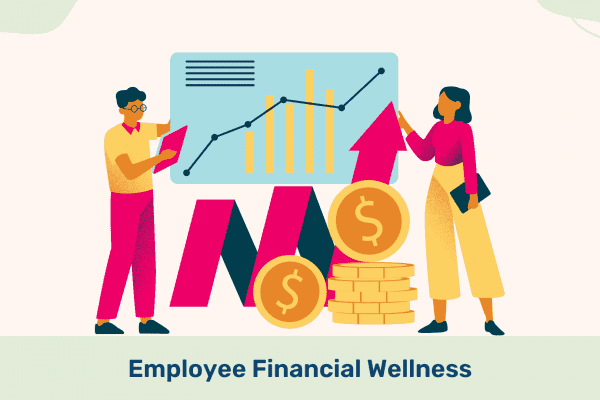Introduction
Welcome to the world of sustainability challenges, where small changes can make a big difference. Sustainability challenges are all about looking after our planet, making sure we’re not using more resources than we need to, and living in a way that’s kind to the environment. It’s not just good for the earth; it’s good for us too.
In this blog, we’re going to walk through “10 Simple Sustainability Challenges to Transform Your Lifestyle.” These are easy-to-implement challenges designed for everyday life. We’re talking about simple swaps and habits that can gradually steer your lifestyle towards being more eco-friendly. Think of things like cutting down on plastic, saving energy, or even changing how you get around.
Each of these 10 challenges is a step towards a greener life. They’re not huge leaps – just little steps that anyone can take. By the end, you’ll see how these small actions can add up to a big impact for our planet. So, let’s get started and see how we can all do our part, one challenge at a time.
Sustainability Challenge 1: Go Plastic-Free for a Week

The first of our sustainability challenges is all about saying no to single-use plastics for a week. It’s a simple but powerful way to reduce your environmental impact and become more aware of the everyday choices that contribute to plastic pollution.
-
-
Understanding the Impact:
- Begin by understanding why this challenge matters. Single-use plastics are a major pollutant, ending up in landfills and oceans, harming wildlife and ecosystems. By choosing to avoid them, you’re directly contributing to reducing this harm.
-
Identify Common Single-Use Plastics:
- Start by identifying the single-use plastics you frequently use. Common items include plastic bags, water bottles, straws, and coffee cup lids.
-
Alternatives to Single-Use Plastics:
- Bring reusable bags when you go shopping. Keep a few in your car or bag so you’re always prepared.
- Swap out disposable water bottles for a durable, reusable one. There are many stylish and practical options available.
- Say no to plastic straws. If you need a straw, consider purchasing a reusable one made from stainless steel, bamboo, or silicone.
- Use reusable containers for storing food instead of plastic wrap or bags. Glass or stainless-steel containers can last for years and are often better for keeping food fresh.
-
Be Prepared:
- The key to succeeding in this challenge is preparation. Plan your grocery trips, carry your reusable items, and don’t be shy about refusing plastic items.
-
Reflect on the Experience:
- At the end of the week, reflect on how this challenge made you feel and the difficulties you encountered. This will provide valuable insights into how you can continue to reduce your plastic usage beyond the challenge.
-
By the end of this one-week challenge, you’ll likely notice how prevalent single-use plastics are and feel more empowered to make sustainable choices in your daily life. Remember, every plastic item avoided is a small victory for our planet
Sustainability Challenge 2: Meatless Mondays

The second of our sustainability challenges focuses on reducing our carbon footprint by modifying our diet. “Meatless Mondays” is a straightforward yet impactful approach to achieving this. By choosing not to eat meat one day each week, you can significantly decrease your environmental impact.
-
-
Why Reduce Meat Consumption?
- Understand the concept: The meat industry is a major contributor to greenhouse gas emissions, deforestation, and water usage. Reducing meat consumption, even just once a week, can lower your carbon footprint and aid in environmental conservation.
- Highlight the health benefits: Incorporating more plant-based meals can also contribute to better health, offering a diverse range of nutrients and often lower in saturated fats.
-
Getting Started with Meatless Mondays:
- Plan your meals: Think about what you typically eat and how you can replace meat in those meals. It could be as simple as swapping out the meat in your favorite dishes with plant-based alternatives.
- Explore new recipes: Use this as an opportunity to try new vegetarian recipes. Share some easy and delicious meatless recipes to get started – think veggie lasagna, stir-fried tofu, or hearty vegetable soups.
-
Tips for Enjoyable Meatless Meals:
- Focus on variety: Ensure your meals are balanced with a good mix of vegetables, fruits, grains, and proteins like beans, lentils, or tofu.
- Experiment with flavors: Explore different cuisines that are traditionally rich in vegetarian options, such as Indian or Mediterranean, to keep things exciting.
-
Sharing the Experience:
- Encourage participants to share their Meatless Monday meals and experiences on social media or with friends and family. This not only creates a sense of community but also inspires others to join in.
-
By adopting Meatless Mondays, you’re not just contributing to a more sustainable world, but you’re also embarking on a journey to discover the rich and diverse world of plant-based eating. It’s a small change that can lead to big impacts – both environmentally and personally.
Sustainability Challenge 3: Daily Water-Saving Tactics

The third sustainability challenge addresses an essential resource we often take for granted: water. By adopting daily water-saving tactics, you can play a vital role in water conservation, a critical aspect of sustainable living.
-
-
Understanding the Importance of Water Conservation:
- Water is a finite resource, and conserving it is essential for the well-being of our planet and future generations.
- Reducing water usage also helps in minimizing energy consumption used in water heating and treatment processes, thereby reducing your carbon footprint.
-
Implementing Simple Water-Saving Actions:
- Take shorter showers: Challenge yourself to reduce your shower time. Even cutting down by a few minutes can save gallons of water.
- Fix leaks: A dripping faucet or a leaking toilet can waste a significant amount of water over time. Fixing these leaks is a simple yet effective way to conserve water.
- Turn off the tap: Be mindful of running water when brushing your teeth, shaving, or washing dishes. Turn off the tap when it’s not in use.
- Use a bucket instead of a hose: For tasks like washing your car or watering plants, using a bucket instead of a hose can greatly reduce water usage.
-
Encouraging Mindful Water Usage:
- Create awareness about how often we use water mindlessly and the impact of these habits.
- Encourage participants to be conscious of their water usage in their daily routines and find more ways to reduce it.
-
Sharing Progress and Challenges:
- Invite participants to share their experiences, tips, and the challenges they face while trying to conserve water.
- Create a platform for discussion and mutual learning, encouraging a community approach to water conservation.
-
By the end of this challenge, the goal is not only to have reduced your water consumption but also to have developed a deeper understanding of the value of water and the importance of conserving it. It’s about making water conservation a natural and integral part of your daily life.
Sustainability Challenge 4: Eco-Friendly Transportation Week

One of the significant sustainability challenges is to reconsider how we travel. For a week, the goal is to avoid using personal cars and instead opt for public transportation, carpooling, biking, or walking. The environmental impact of this shift can be substantial. According to a compelling UCLA statistic, compared with driving alone, taking public transportation can reduce CO2 emissions by 45%. This substantial decrease in pollutants not only improves air quality but also contributes significantly to combating climate change. During this week, not only will you reduce your carbon footprint, but you may also discover the added benefits of public transit, such as reduced stress and increased physical activity.
-
-
Exploring Public Transportation:
- Utilize buses, trains, subways, or trams for your daily commute. Public transportation significantly reduces CO2 emissions per passenger compared to individual cars.
- Plan your journey: Check schedules in advance and explore the most efficient routes to your destination.
-
The Benefits of Carpooling:
- Share rides with colleagues, friends, or neighbors. Carpooling not only reduces the number of vehicles on the road but also saves on fuel costs and reduces traffic congestion.
- Use carpool apps or community boards to find people with similar routes and schedules.
-
Biking and Walking:
- For shorter distances, consider biking or walking. These not only reduce emissions but also promote physical fitness.
- Ensure your safety: Wear appropriate gear, follow traffic rules, and use designated bike lanes or sidewalks where available.
-
Raising Awareness about Eco-Friendly Transportation:
- Discuss the environmental impact of different transportation modes, emphasizing the benefits of eco-friendly choices.
- Encourage a shift in mindset from convenience to environmental responsibility.
-
Sharing Experiences and Encouraging Others:
- Share your experiences and challenges of using eco-friendly transportation on social media or within your community.
- Encourage others to join you in this challenge, creating a collective effort towards a more sustainable mode of transportation.
-
By the end of this week, you will have gained a new perspective on the feasibility and benefits of eco-friendly transportation. It’s about making conscious choices that are not only good for the planet but can also lead to a more connected and active lifestyle.
Sustainability Challenge 5: Local Food Challenge

The fifth sustainability challenge revolves around our food choices and their environmental impact. This week, the focus is on buying and eating food that’s locally sourced. This simple shift in how and where we shop can have profound effects on our carbon footprint, local economies, and even our health.
-
-
Understanding the Benefits of Local Food:
- Buying local reduces ‘food miles’ – the distance food travels from farm to plate, which in turn lowers greenhouse gas emissions.
- Supporting local farmers and producers helps sustain the local economy and maintains the agricultural landscape of the community.
- Local food is often fresher, more nutritious, and tastes better as it’s harvested at its peak and doesn’t require long-distance shipping.
-
How to Participate in the Local Food Challenge:
- Visit your local farmers’ markets or farm stands. This is a great way to find a wide variety of fresh, locally grown produce.
- Look for local food sections in your grocery stores or consider subscribing to a local CSA (Community Supported Agriculture) box.
- When dining out, choose restaurants that source ingredients locally.
-
Challenges and Learning:
- Recognize that this challenge may require a change in your meal planning and shopping habits. Embrace the opportunity to try new, locally-grown foods and recipes.
- Document your journey: Share the variety of local produce you discover, any changes in the quality and taste of your meals, and how this choice impacts your view of food and community.
-
Encouraging Broader Participation:
- Share the benefits of eating locally with friends and family. Encourage them to join the challenge, even if it’s just for one meal.
- Use social media to raise awareness about the importance of supporting local agriculture and the environmental benefits of eating locally.
-
By the end of the week, you’ll likely have a new appreciation for the bounty available in your local area and a better understanding of the direct impact your food choices can have on the environment and local community. This challenge is an invitation to forge a closer connection with the source of your food and to make choices that are more aligned with sustainable living.
Sustainability Challenge 6: Zero-Waste Day

Challenge 6 takes sustainability challenges to a personal level, focusing on waste reduction. The objective is simple yet impactful: aim to produce no waste for an entire day. This challenge encourages mindfulness about consumption and waste generation, promoting habits that can significantly reduce your environmental footprint.
-
-
Understanding Zero-Waste Living:
- Zero-waste living involves reducing what we need, reusing as much as we can, sending as little as possible to landfills, and recycling effectively.
- The goal is to minimize the amount of waste that ends up in oceans, landfills, and incinerators.
-
Tips for a Zero-Waste Day:
- Avoid Single-Use Products: Carry reusable items like water bottles, coffee cups, utensils, and shopping bags to avoid disposable alternatives.
- Composting Organic Waste: If you have access, compost your food scraps instead of throwing them in the trash.
- Mindful Shopping: Buy only what you need and choose products with minimal or no packaging. Bulk stores can be a great option for package-free goods.
- Recycle Effectively: Be informed about your local recycling guidelines to ensure you’re recycling correctly.
- DIY and Upcycling: Consider DIY solutions for items you might otherwise throw away and find new uses for old items.
-
Planning Your Zero-Waste Day:
- Prepare the night before. Plan your meals, pack your reusable items, and think about any potential waste you might encounter.
- Evaluate your usual waste habits and identify areas where you can make changes.
-
Reflecting on the Challenge:
- At the end of the day, reflect on the experience. What was challenging, and what changes were easier to make than expected?
- Consider how these zero-waste practices can be incorporated into your daily routine beyond this challenge.
-
This one-day challenge is an eye-opener to the amount of waste an individual can generate and how small changes can make a big difference. While going completely zero-waste can be challenging, aiming for reduced waste is a significant step towards a more sustainable lifestyle.
Sustainability Challenge 7: Energy Efficiency Day

Challenge 7 in our sustainability challenges journey focuses on reducing energy consumption in our daily lives. The ‘Energy Efficiency Day’ challenge aims to raise awareness about how we use electricity and encourages actions that lead to more efficient and responsible usage. Here are some tips and practices to make this day a success:
-
-
Switch to Energy-Efficient Lighting:
- Replace conventional light bulbs with energy-efficient LED bulbs, which use less power and last longer.
- Make the most of natural light during the day to reduce the need for artificial lighting.
-
Unplug Electronics When Not in Use:
- Unplug chargers, appliances, and electronics when they’re not being used. Even when turned off, many devices continue to draw power, known as ‘phantom load.’
- Use power strips to easily switch off multiple devices at once.
-
Mindful Appliance Use:
- Be conscious of how you use larger appliances. For instance, only run the dishwasher or washing machine with full loads.
- Consider air-drying clothes and dishes instead of using the dryer or dishwasher’s drying cycle.
-
Monitor Heating and Cooling:
- Adjust your thermostat by a degree or two to reduce energy usage. Even a small change can make a significant difference in consumption.
- Use fans for cooling and dress appropriately for the weather to minimize reliance on heating and cooling systems.
-
Energy Audit:
- Conduct a simple energy audit of your home. Identify areas where you can improve energy efficiency, such as sealing drafts around doors and windows.
-
Educate and Spread Awareness:
- Share energy-saving tips with family and friends.
- Encourage others to join you in making energy-efficient choices in their homes.
-
This one-day challenge is designed to spark longer-term changes in how you consume energy. By implementing these small, conscious actions, you can significantly reduce your energy usage and contribute to a more sustainable and environmentally friendly lifestyle.
Sustainability Challenge 8: DIY Natural Cleaning Products

In this challenge, we focus on reducing the environmental impact of household cleaning by making our own natural, eco-friendly cleaning products. This not only minimizes the release of harmful chemicals into the environment but also promotes a safer home environment. Here are some simple recipes to get you started:
-
-
All-Purpose Cleaner:
- Mix 1 part white vinegar with 1 part water in a spray bottle. Add a few drops of your favorite essential oil for scent, like lemon or lavender. This solution works well for cleaning glass, countertops, and tiles.
-
Scouring Powder:
- Combine 1 cup baking soda, ½ cup salt (not iodized), and ½ cup borax powder. Store it in a container and sprinkle it on surfaces that need a good scrub, like sinks and bathtubs.
-
Grease Cleaner:
- Mix ½ cup sudsy ammonia with enough water to fill a one-gallon container. This makes an effective cleaner for ovens and greasy surfaces.
-
Carpet Freshener:
- Mix 2 cups of baking soda with 10-20 drops of essential oil. Sprinkle the mixture on the carpet, let it sit for 15-20 minutes, then vacuum. It leaves the room smelling fresh and the carpet clean.
-
Window Cleaner:
- Combine 2 tablespoons of white vinegar with a gallon of water. Use a clean cloth or newspaper to wipe windows clean from streaks.
-
Furniture Polish:
- Mix 1 cup olive oil with ½ cup lemon juice. Use a soft cloth to apply it to furniture for a natural shine.
-
Mold and Mildew Remover:
- Mix 1 part hydrogen peroxide (3%) with 2 parts water in a spray bottle and apply to mold and mildew affected areas. Wait at least one hour before rinsing or using the shower.
-
Remember, when using homemade cleaners, it’s essential to label the containers and keep them out of reach of children and pets. This challenge encourages you to rethink the way we keep our homes clean and take a step towards a more sustainable, chemical-free living environment.
Sustainability Challenge 9: Plant a Tree or Start a Home Garden

Challenge 9 moves us outdoors, encouraging a direct and hands-on approach to sustainability. Whether it’s planting a tree or starting a small herb or vegetable garden, this challenge brings numerous environmental and personal benefits. Here’s how to get started:
-
-
Planting a Tree:
- Understand the benefits: Trees are vital for the environment. They absorb CO2, improve air quality, offer habitat to wildlife, and contribute to the overall health of the planet.
- Choose the right tree: Research which tree species are native and suitable for your area’s climate and soil type. Local nurseries can provide valuable advice.
- Find the right spot: Consider the tree’s mature size and root system when choosing a planting location.
-
Starting a Home Garden:
- Benefits of a home garden: Growing your own herbs, fruits, and vegetables can reduce your carbon footprint, minimize plastic packaging, and provide you with fresh and organic produce.
- Starting small: Begin with easy-to-grow herbs like basil, mint, or parsley, or vegetables like tomatoes and lettuce, which can even be grown in small spaces or containers.
- Organic practices: Use compost for fertilizer and natural methods for pest control to keep your garden eco-friendly.
-
Educational Aspect:
- Use this challenge as a learning opportunity about the importance of plants and trees in our ecosystem.
- If you have children, involve them in the process. It can be a great educational experience for them.
-
Community Involvement:
- If possible, organize a community tree-planting event. This can help spread awareness and increase local green spaces.
- Share your gardening journey on social media or community platforms to inspire others.
-
This challenge isn’t just about the act of planting; it’s about nurturing and understanding our connection to the natural world. It’s a commitment to contribute positively to the environment and to appreciate the simple joys of nature.
Sustainability Challenge 10: Educate and Spread Awareness

The final challenge in our sustainability challenges series is all about spreading the word. Educating ourselves and others about environmental issues and sustainable practices is crucial in creating a larger impact. This challenge is about becoming an advocate for sustainability in your community.
-
-
Educate Yourself:
- Commit to learning more about sustainability. Read books, articles, and research papers on environmental issues and sustainable living.
- Follow reputable blogs, social media accounts, or podcasts that focus on eco-friendly practices and current environmental news.
-
Share What You Learn:
- Share interesting facts, tips, or articles with friends and family. Use your social media platforms to spread awareness.
- Discuss what you’ve learned with others. Sometimes, a casual conversation can inspire someone else to make positive changes.
-
Organize or Participate in Educational Events:
- Attend workshops, webinars, or community events focused on environmental education. When possible, organize such events in your community or workplace.
- Participate in local environmental groups or online forums to stay engaged with current issues and solutions.
-
Encourage Eco-Friendly Practices in Your Community:
- Start a discussion with friends, family, or colleagues about simple eco-friendly practices they can adopt.
- If you have children, teach them about the importance of protecting the environment and ways they can help.
-
Lead by Example:
- Practice what you preach. Implement sustainable practices in your daily life and share your experiences and challenges.
- Your actions can inspire others to follow suit, creating a ripple effect of positive environmental impact.
-
Support Environmental Causes:
- Support environmental organizations or campaigns. This can be through donations, volunteering, or participating in advocacy and awareness programs.
-
By spreading awareness and educating others, you’re contributing to a larger cultural shift towards sustainability. Remember, every conversation you have and every piece of information you share can have a profound impact. You have the power to inspire change and make a difference.
Conclusion
As we wrap up our journey through the “10 Simple Sustainability Challenges,” it’s important to reflect on the journey we’ve taken and the profound impact these practices can have. Individually, each challenge has introduced a small yet meaningful change to our daily routines, contributing to a healthier, more sustainable way of living. Collectively, they represent a significant stride towards reducing our environmental footprint and fostering a more eco-conscious society.
The potential impact of these sustainability challenges extends far beyond the individual level. By adopting more sustainable practices, we contribute to a larger movement that prioritizes the health of our planet and its future. From conserving water and energy to supporting local communities and reducing waste, the cumulative effect of these actions can lead to substantial environmental benefits.
As we conclude this series, the encouragement is to not view these challenges as one-time tasks, but as stepping stones to a lifelong commitment to sustainability. The goal is to integrate these eco-friendly practices into the fabric of our daily lives, making them second nature.
For those looking to extend the spirit of these challenges into the workplace, Woliba offers an excellent solution. With their platform, you can easily manage and launch sustainability challenges within your office. Whether it’s organizing a carpool system, coordinating a group tree-planting event, or setting up a weekly local food day, Woliba provides the tools to bring these initiatives to life. By engaging colleagues in these challenges, you amplify the impact and foster a culture of sustainability in your workplace.
Embracing a sustainable lifestyle is a journey that involves continuous learning, growth, and change. With each step, we move closer to a more sustainable and equitable world. Let’s carry the momentum forward, making sustainability a core part of our lives, our communities, and our workplaces. Contact us today!




